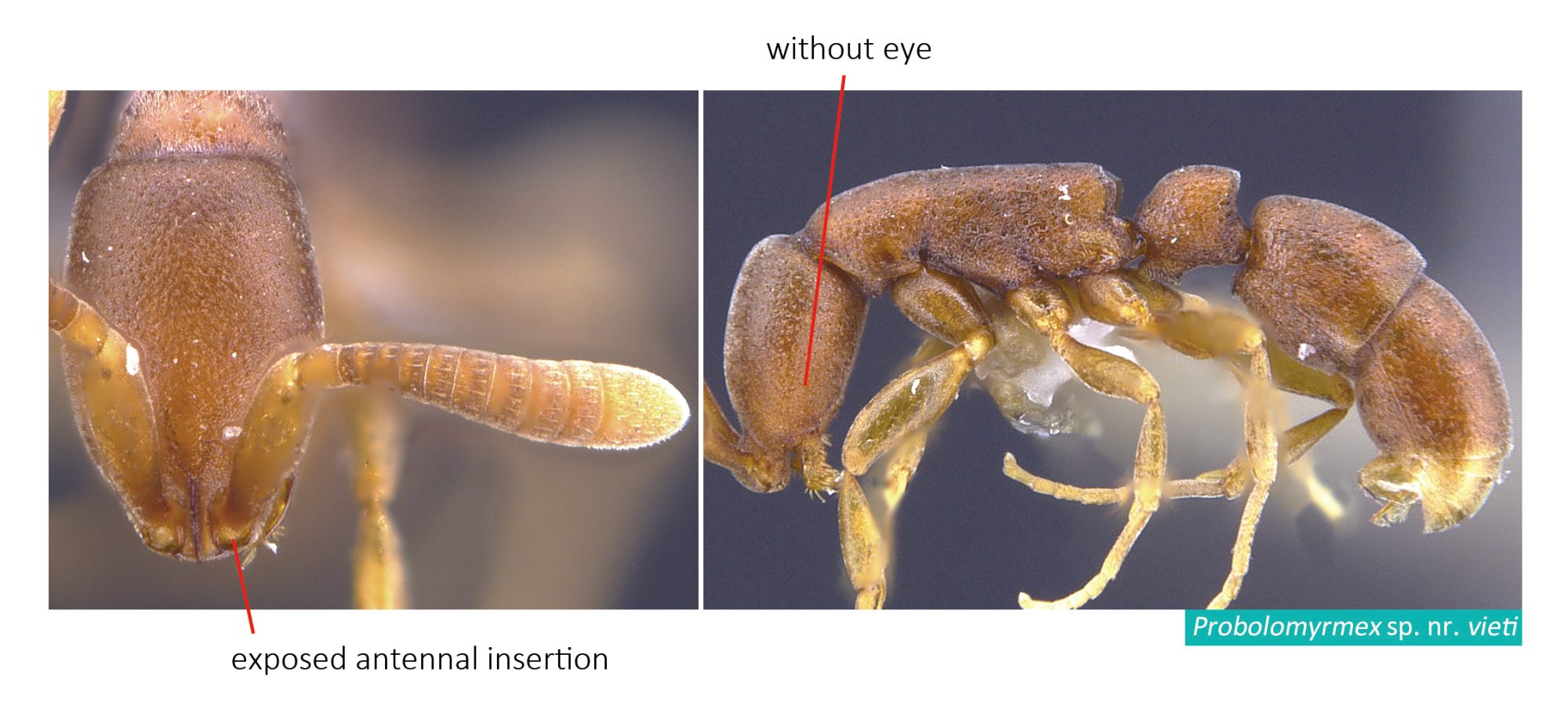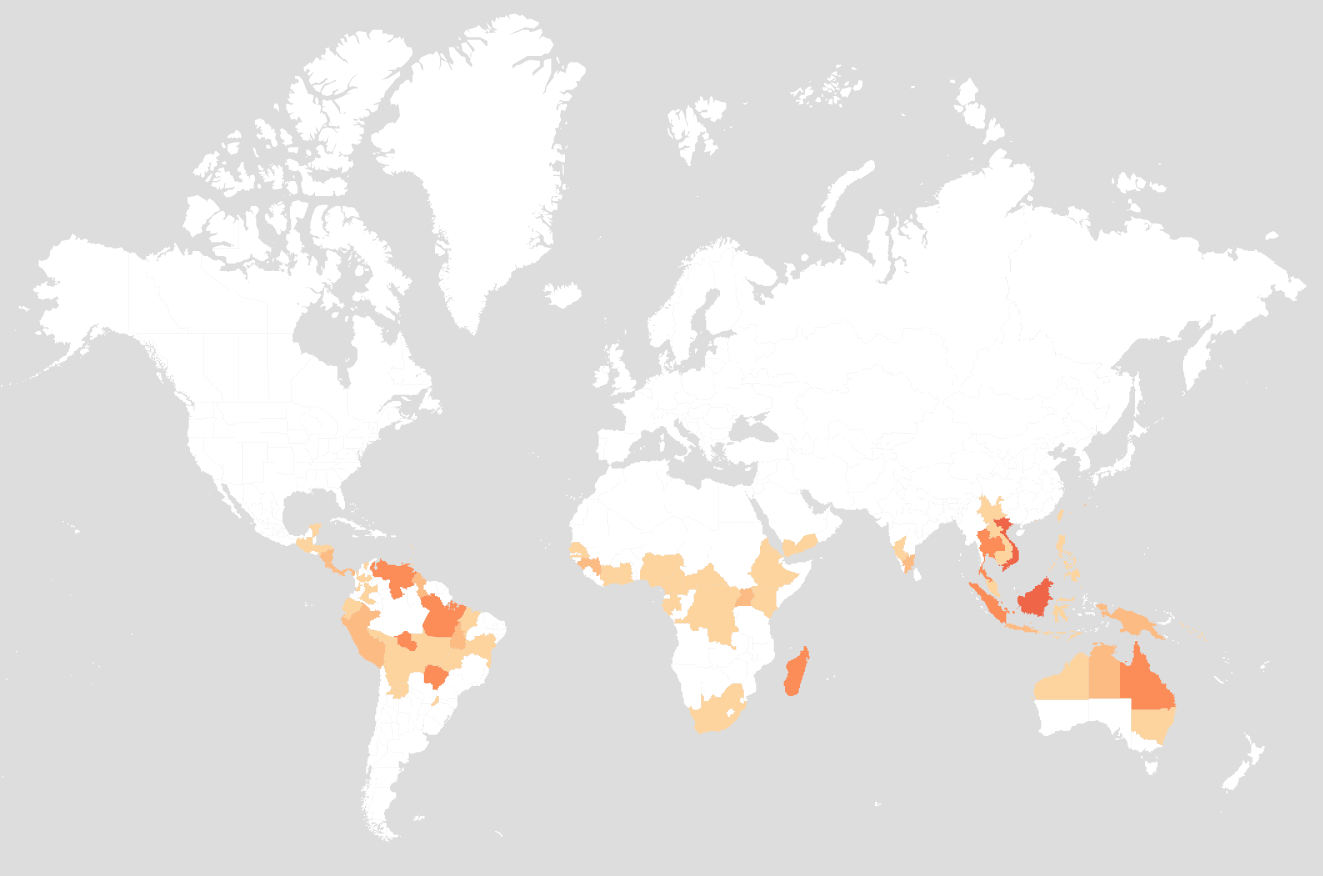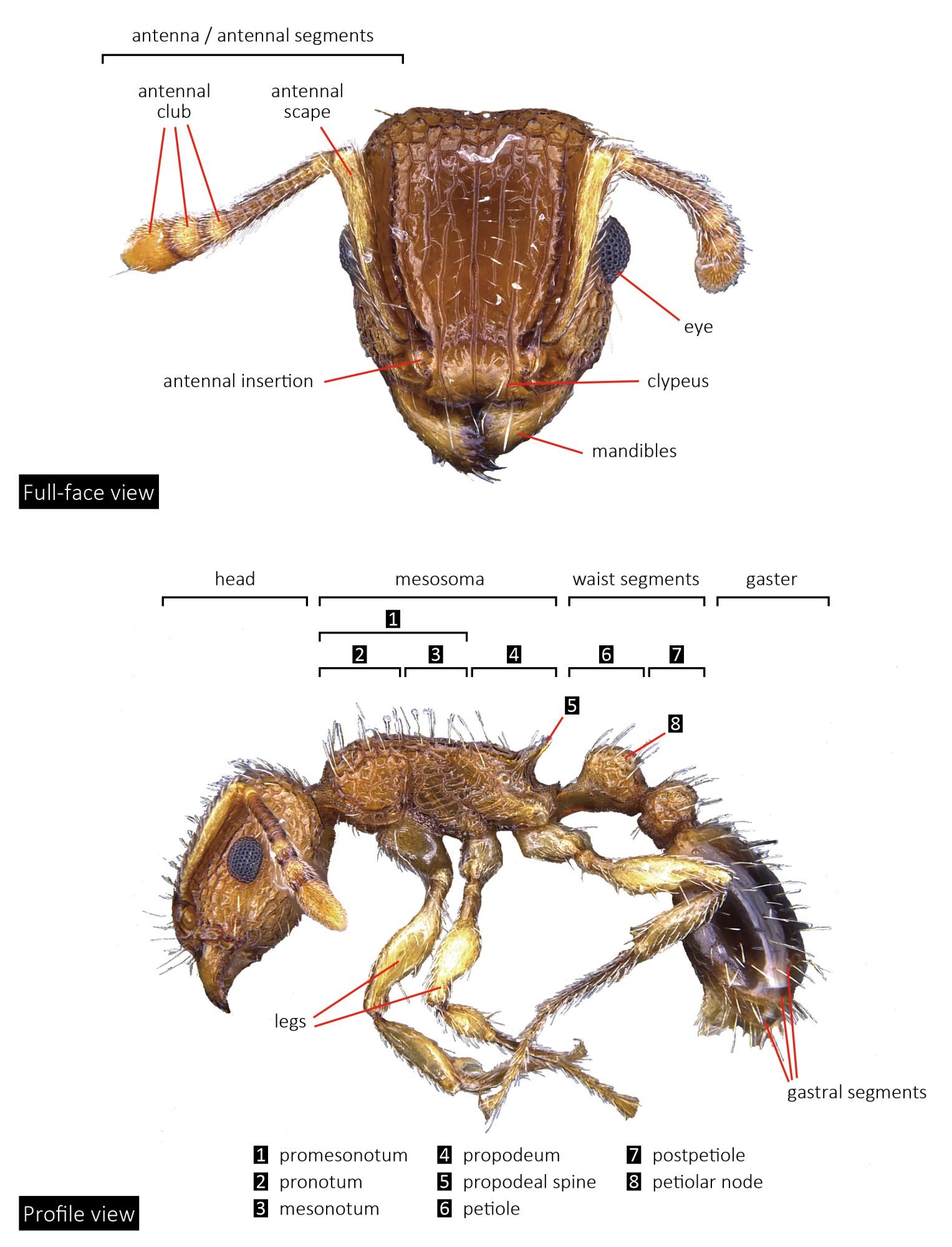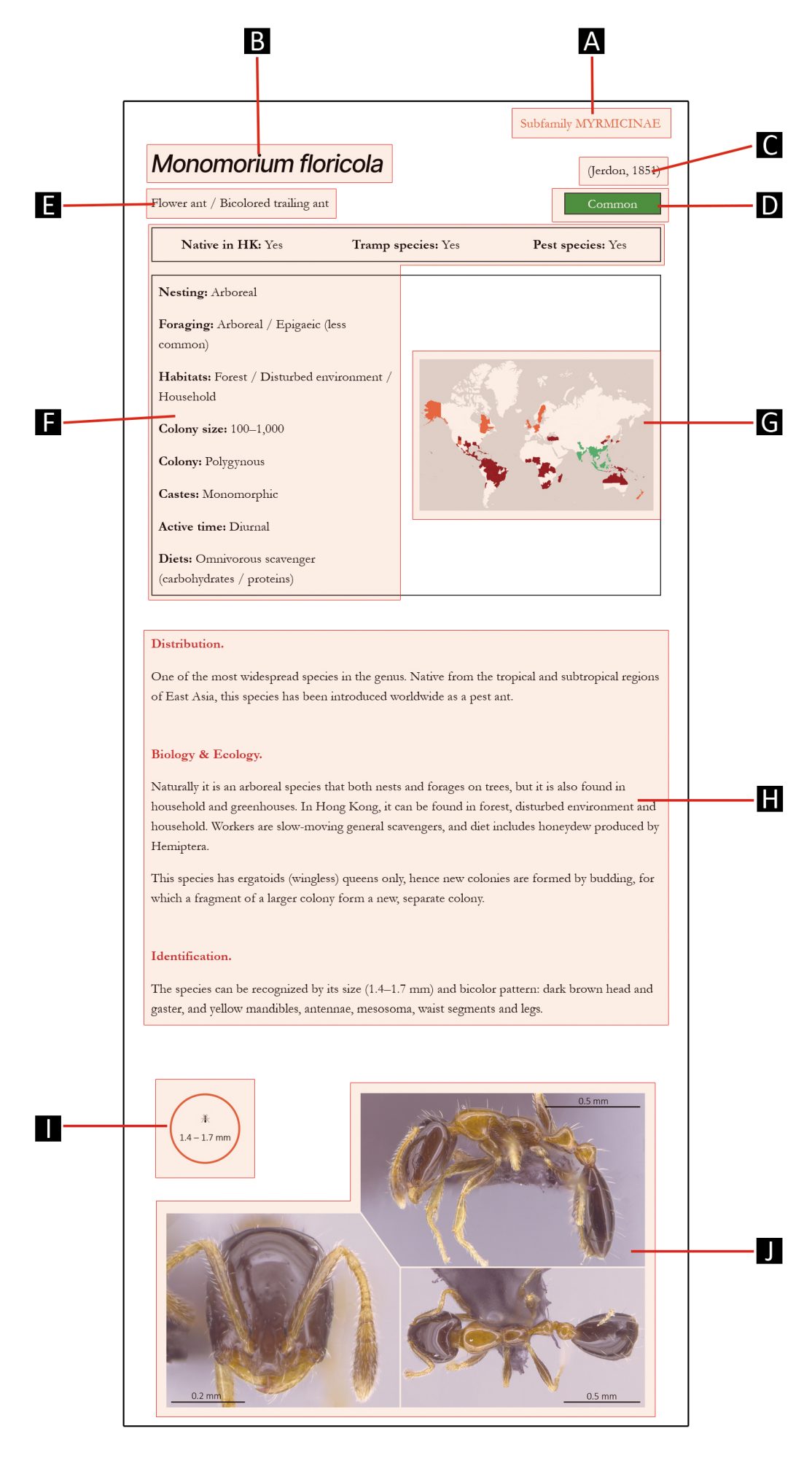
Subfamily PROCERATIINAE
GENUS
Probolomyrmex
Mayr, 1901
Distribution.
A small ant genus with 30 species described. The genus has a widespread distribution, but is mainly restricted to tropical and subtropical regions.
Biology & Ecology.
The genus is rather uncommon due to the low abundance of workers and its subterranean lifestyle. Individuals are rarely found above ground, with nests usually located within the soil, leaf litter or decaying wood. Nests are very small and contain only one to two dozen of workers.
Probolomyrmex species are specialized hunters. Workers’ foraging activity is limited to within the soil or leaf litter of forest habitats. Several Asian species are likely specialized in hunting polyxenid millipedes, but it is uncertain if the same apply to species from other parts of the world.
Due to their cryptic lifestyle, biology of most species remains unknown, apart from which most species have alate (winged) queens.
Identification.
Probolomyrmex species are small to very small in size (1–2 mm), with light brown to brown coloration. They can be easily recognized by their exposed antennal insertion points and the lack of eye.

Species in this genus




